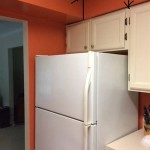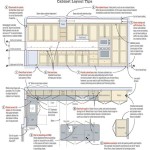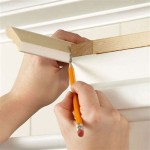Standard Kitchen Cabinet Sizes Chart (mm)
Kitchen cabinet sizes are crucial for successful kitchen design and functionality. Understanding standard measurements allows homeowners and designers to efficiently plan layouts and optimize space. This article outlines the typical dimensions of kitchen cabinets in millimeters, providing a comprehensive reference guide for kitchen planning.
Base Cabinets
Base cabinets, the foundation of any kitchen layout, provide ample storage for cookware, appliances, and other household items. Standard base cabinet depths range from 560 mm to 600 mm, offering generous storage capacity. Heights, however, vary depending on the intended use.
Typical base cabinet heights range from 860 mm to 910 mm, providing a comfortable work surface height. For countertop-level cabinets, the standard height is 910 mm. However, for under-sink or appliance cabinets, a lower height of 860 mm is often preferred for optimal accessibility and functionality.
Base cabinets are also available in various widths to accommodate diverse storage needs. Common widths include: *
300 mm:
Narrow cabinets ideal for small spaces or specific appliances. *450 mm:
Standard width for base cabinets, offering a good balance of storage and practicality. *600 mm:
Wider cabinets suitable for larger appliances, pantry storage, or extended countertops. *900 mm:
Very wide cabinets offering maximum storage potential.When designing a kitchen layout, consider the intended use and placement of each base cabinet. For example, countertop cabinets will typically require greater widths than under-sink cabinets.
Wall Cabinets
Wall cabinets, hung above countertops, provide additional storage space for dishes, glassware, and other frequently used items. Standard wall cabinet depths typically range from 300 mm to 350 mm, offering ample space without encroaching on headroom.
Wall cabinet heights vary depending on the desired aesthetic and functionality. Standard heights range from 720 mm to 860 mm, offering ample space for dishes and other kitchen items. However, tall cabinets exceeding 900 mm are also available, providing even more storage capacity.
Like base cabinets, wall cabinets are available in various widths to accommodate diverse storage needs. Common widths include: *
300 mm:
Narrow cabinets ideal for small spaces or specific storage items. *450 mm:
A standard width for wall cabinets, providing a good balance of storage and practicality. *600 mm:
Wider cabinets offering ample space for larger dishes or appliances. *900 mm:
Very wide cabinets offering maximum storage potential.When planning wall cabinet placement, consider the height of countertops and the desired aesthetic balance within the kitchen. For example, tall cabinets can be positioned above sink areas for additional dish storage.
Tall Cabinets
Tall cabinets, also known as pantry cabinets or larder cabinets, offer substantial storage space for bulk items, appliances, or even small appliances. These cabinets typically reach heights of 2000 mm or even 2400 mm, providing significant vertical storage space.
Standard tall cabinet depths typically range from 560 mm to 600 mm, similar to base cabinets. However, wider depths of 700 mm or even 800 mm are available for larger pantries or appliance storage.
Common tall cabinet widths include: *
450 mm:
Standard width for tall cabinets, offering a good balance of storage and practicality. *600 mm:
Wider cabinets suitable for larger storage needs, such as appliance storage or pantries. *900 mm:
Very wide cabinets offering maximum storage potential.Tall cabinets can be strategically placed in kitchens, offering valuable storage capacity, particularly in smaller kitchens where space is limited.
Other Considerations
Besides standard cabinet sizes, several additional factors impact kitchen design. These include: *
Countertop overhang:
Countertops typically overhang base cabinets by 30 mm to 50 mm, providing a comfortable workspace. *Cabinet doors and drawer fronts:
Door and drawer sizes will vary based on cabinet width and design. *Cabinet finishes and materials:
Cabinet finishes and materials influence both the style and practicality of the kitchen. *Cabinet hardware:
Knobs, pulls, and other hardware add functionality and visual appeal to cabinets.By understanding standard cabinet sizes and incorporating these additional factors, homeowners and designers can create efficient and aesthetically pleasing kitchens that meet individual needs and preferences.

Cabinet Sizes Blok Designs Ltd

Helpful Kitchen Cabinet Dimensions Standard For Daily Use Engineering Feed

Fitted Kitchens Direct An Independent Kitchen Supplier For Your Budget Or Bespoke Either Supply And Fit Only

Helpful Kitchen Cabinet Dimensions Standard For Daily Use Engineering Feed

Standard Size For Kitchen Cabinet Base Tall Wall Cabinets Meru Timber

Metric Data 09 Kitchen Standard Sizes

Kitchen Unit Door Combinations

N Standard Kitchen Dimensions Renomart

Noyeks Kitchen Matrix Standard Unit Sizes Installations

N Standard Kitchen Dimensions Renomart
Related Posts








